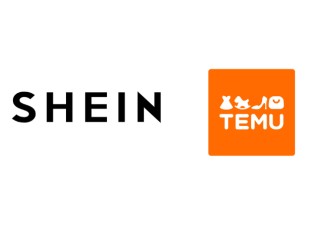The rapid growth of the Chinese economy has intensified parallel imports in China. When I started practicing as a trademark attorney in 2004, I received very few inquiries about parallel imports in China. But since 2009 or 2010, brand owners in China are facing more and more challenges from parallel imported products. I once work for some famous French wine manufacturers who are annoyed by the prevalence of parallel imported goods. I believe that the brand owners of some luxury brands may also encounter similar problems, losing money and market share because of parallel imports. Even worse, the goodwill of the brand might be tainted due to the importers’ improper sales activity or after-sale services.
So, what are parallel imports?
According to the International Trademark Association, parallel imports (or grey market goods) refer to branded goods that are imported into a market and sold there without the trademark owner’s consent in that market. These goods have been manufactured by or under license of the brand owner and therefore are not counterfeit, but they may have been formulated or packaged for a particular jurisdiction and are imported into a different jurisdiction in contradiction to the brand owner’s intention. The products themselves are not fake. However, due to different selling prices or quality standards in different markets, some companies import and/or circulate products from one market to another market without the consent of the brand owners.
What are the current laws and regulations of parallel imports in China?
I have to say that parallel imports are very complicated. It is not only a legal issue, but also concerns the trade policies and interests of a country. This is why both the Paris Convention and TRIPS do not clearly prohibit parallel imports, but leave it to each particular country’s own discretion. In China, there are several official documents indicating parallel imports are permissible in China. For example, according to China’s Patent Law (2020), Article 75, using, promising to sell, selling or importing any patented products or products directly obtained under the patented process after the said products are sold by the patentee or by its licensed entity or individual, such activities shall not be deemed an infringement upon a patent right.
In 2016, the Beijing High Court released a trial guideline, Several Legal Issues Requiring Attention in the Current Intellectual Property Trial (2016). In this trial guideline, the Beijing High Court pointed out that parallel imports should be accepted by the judiciary and shall not be deemed an infringement of trademark rights.
In 2018, the Tianjin High Court also released a trial guideline, Trial Guidelines of Tianjin High People's Court on Cases Involving Trademark Infringement Disputes on Parallel Imports (for trial) 2018.1.1. In this trial guideline, it clearly indicates the basic principle and ideas of solving disputes arisen by the parallel imports. Also, the criteria of infringement and defense factors are also listed. It takes the exhaustion of trademark rights as the basic principle and elaborates that the main purpose of trademark law protecting trademark rights is to maintain the identity of the trademark owner as the subject of the goods marked by the trademark and its goodwill, so as to maintain a healthy market business order. Since parallel imported goods are not counterfeit goods and the right holder has already obtained commercial returns when selling the goods for the first time, there is no legal basis for the right holder to prohibit others from re-selling or reasonably marketing the product.
In 2016 and 2019, the Ministry of Commerce, along with several other departments issued two documents proposing to carry out the pilot project of parallel import of automobiles in the pilot free trade zone. It can be seen from these documents that China has taken substantial steps in allowing and even encouraging parallel imports of automobiles.
In 2021, the Hainan provincial People’s Congress and its Standing Committee issued another document, allowing traders to import and sell parallel imported goods in the Hainan Free Trade Port, except if the use of the relevant registered trademark will cause damage to the distinctive features or reputation of the registered trademark.
From the above, we can see that some official documents have admitted that the parallel imports are permissible in some industries or regions in China.
On the other hand, there are no clear provisions on parallel imports in the current trademark law, the implementing regulations of trademark law and the related judicial interpretations, which neither allow nor prohibit parallel imports. Due to the lack of clarity of the state of the law while the Chinese economy has developed rapidly, more and more parallel imports have occurred in China. Currently, most of the cases involving parallel imports brought by brand owners in China mainly rely on the grounds of trademark infringement and unfair competition.
What is the judicial practice in China?
Based on the previous litigation cases decided by Chinese courts at different levels, as well as some trial guidelines released by local high courts, including the above-mentioned Beijing High Court and Tianjin High Court, we could conclude that, if the imported products are genuine without altering, Chinese courts tend to determine that the relevant parallel import does not constitute trademark infringement. The general rule of judgment is “non-infringement is the principle and infringement is the exceptional”. In some rulings, the courts clearly indicate that they apply the doctrine of international exhaustion, but some judges held that it is not appropriate to cite it as the basis of judicial judgment, because neither the trademark law nor judicial interpretations specifically adopt such principle.
At the same time, courts also try to balance the interests among brand owner, importer and consumers. They generally adopt three standards as exceptional circumstances, in order to safeguard the consumers’ rights/interests and exclude parallel imports that are materially different from those products authorized for sale by the brand owner in the Chinese market. The three standards are “statutory safety standard”, “material or substantial differences standard” and “improper use standard”. I will elaborate these three standards with some example cases.
The first principle is the “statutory safety standard”. If the imported goods do not meet or violate China’s mandatory quality standards, the exhaustion of rights will not apply and such importation or sale will constitute trademark infringement. This rationale is adopted in the Michelin case and the Jelly Belly case. In Michelin, decided in 2009, the imported tires were not approved under the China Compulsory Product Certification (3C) system, which is a statutory system in China (also called 3C Certification). The court decided that the defendants’ sales of tires without 3C certification deemed an infringement of the trademark owner’s rights. The same standard applied in Jelly Belly. Decided in 2019, the candy products manufactured in the United States included some ingredients which are not allowed to be added according to China’s food safety standards, so the court decided that the importation and sale of such goods in the Chinese market violates China’s mandatory regulations, which is an illegal act and infringes the brand owner’s rights.
The second one is the “material differences standard”. If the importer or distributor has made changes to the parallel imported products, or to one of the elements, such as removing the product ID (identification) code, adding Chinese transliteration on the labels, reassembling, repackaging, re-modifying the products, etc., and such changes will lead to consumer confusion, or damage the goodwill of the trademark owner, and cut off the correspondence between the trademark and the product, infringement will be established. Example cases include:
-
The Absolut case. The products related are vodka, in which case the defendant removed the ID identification code and beard Chinese transliteration on the labels;
-
The CoronaExtra case. The product is beer, in which case the defendant added Chinese marks on the labels;
-
The Peko case. The products related are candies and chocolate, in which case the imported products were repackaged by the defendant;
-
The Domino case. The products are inkjet printers, in which case the parallel importer reassembled the original products.
The last principle is the “improper use standard”. If the seller of parallel imported products uses the trademark of the imported products (for advertising, promoting, etc.) improperly during the sales process, such use might be deemed as infringement. In such cases, courts will consider whether the seller’s use of such trademark is beyond the necessary scope or belongs to fair use. The courts will also look at factors such as whether the purpose of use is justified, and whether such use might infringe the brand owner’s service mark. In this situation, if the brand owner registers a service mark in addition to the product mark, i.e. registers the same mark on services like “online advertising, import and export services, sales promotion for others, Presentation of goods on communication media, for retail purposes, etc.” in Class 35 according to the Chinese Goods/Services Classification Guide, such registration of the service mark will help win the case by claiming the improper use.
Example cases of this principle include the Prada case and the Fendi case, all luxury brands for bags and clothing. The brand holders’ trademarks are predominantly used by the defendant on the signboard outside the store and thus are deemed as beyond the necessary scope of selling parallel imported goods. Besides, in Fendi, the Fendi company had registered service marks in Class 35 and, therefore, the judges also held the use of parallel importer infringed the rights of the brand owner’s service mark.
The above rules and standards have become the trend in dealing with parallel imports cases in China and have been frequently adopted in several cases in recent years.
What are the feasible solutions for brand owners when encountering parallel imports in China?
The current judicial practice in China gives some important references to brand owners who encounter parallel imports:
Before the parallel imports occur, brand owners may consider taking following precautionary measures in China:
(1) Properly register their trademarks in China based on the “first-to-file system” and subclass system. For the first-to-file system, I would suggest that, in addition to the English mark, it is also advisable for the brand owner to apply for registration of the corresponding Chinese trademarks. By doing this, brand owners may control the circulation of goods bearing English word marks only in the exporting market, whereas bearing both English and Chinese marks in the Chinese market. If the importers use Chinese trademarks on the products’ labels, packages, or even customers’ documents during the importing process without the brand holders’ consent, such use will be deemed trademark infringement. The same rule has been applied in several precedents. Besides, the brand owners’ licensed Chinese distributors can use the Chinese trademarks on their online stores, like, if the brand owner is Prada or Louis Vuitton, they are entitled to license their authorized online stores using the tags like “Prada flagship store” or “Luis Vuitton flagship store”.
For the subclass system, I would suggest brand owners apply for registration for their house marks not only on the intended goods, but also the related services in Class 35, like “online advertising, import and export services, sales promotion for others, Presentation of goods on communication media, for retail purposes, etc.”, because the advertising activity and promotional activities on the online stores can be regarded as the use of the service mark.
(2) Add different product identification code on the products in different market. By doing this, both the brand owner and their distribution partners could trace and manage the products they sell in China.
(3) Record their trademarks before the China Customs and include their authorized local licensees in the white list. If parallel imported goods enter the Chinese market, they might be detained by China Customs. The brand owners will then have the opportunities to view the products and see whether they are fake products or parallel imported goods. If the latter, possible solutions could be arranged at the first place.
(4) Most importantly, brand owners and local distributors need to timely monitor the market. If they spot the sales and advertising of parallel imports in the market, either online or offline, they should timely preserve evidence at the beginning stage and seek feasible solutions to try to stop such parallel imports.
When parallel imported goods are detected in the market, it is not a smart move to take legal action merely based on the claims that the goods infringe the trademark rights. Instead, brand owners need to focus on the aspects whether the parallel imported goods have the above three exceptional circumstances. It should be noted that the plaintiff bears the burden of proof for the claims, such as the existence of “material difference” and the importers/sellers have used the mark beyond the necessary scope.
Besides, in trademark infringement cases, the defendant sometimes takes the parallel imports as a defense. However, the premise of this defense is that the goods are genuine goods from the trademark owner in other regions and are imported into China through legal customs clearance procedures. If the defendant fails to provide such evidence attesting to this premise, the case will be examined as a normal trademark infringement case. In most cases, it is not easy to provide all the necessary documents.
Conclusion
Parallel imports are not only a legal issue, but also concern the trade policies and interests of a country. Due to the lack of clarity of the state of the law in China, brand owners currently may refer to the judicial precedents and take proper measures to tackle the parallel imports issues. Hopefully, parallel imports issue will be considered and included in the next time amendment of China’s trademark law or future judicial interpretations.









